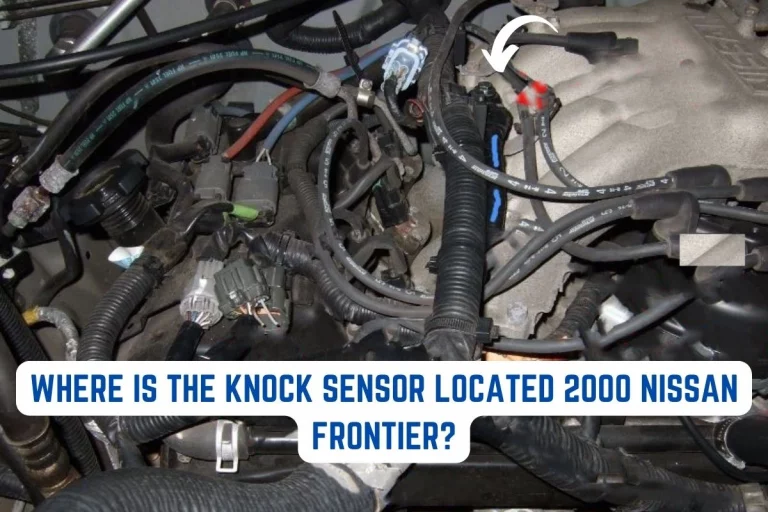F150 Runs Better With O2 Sensor Unplugged: Why?
Many Ford F150 owners have reported that their truck runs better with the oxygen sensor unplugged. This seemingly counterintuitive fix raises questions about the proper functioning of the oxygen sensor and its impact on engine performance.
In this article, we will explore the causes and effects of disconnecting the oxygen sensor in the Ford F150, as well as the potential risks and drawbacks of this practice.
Table of Contents
What does the o2 sensor do in a Ford?

In a Ford vehicle, the oxygen sensor (O2 sensor) measures the amount of oxygen in the exhaust system. It is essential for the engine’s electronic control system, also known as the engine management system, to function properly.
The sensor sends a signal to the engine control module (ECM) or powertrain control module (PCM), which uses the data to adjust the air-fuel ratio, ensuring that the engine operates at peak efficiency and performance.
How does it work?
The O2 sensor is usually found in the exhaust pipe and measures the difference in oxygen levels between the incoming air and the exhaust gases. Depending on the oxygen content of the exhaust gases, the sensor generates a voltage signal ranging from 0 to 1 volt.
When the engine is running smoothly, the exhaust gases contain a trace of oxygen, and the sensor outputs a low-voltage signal. When the engine runs rich (too much fuel and not enough air), the exhaust gases contain more oxygen, and the sensor outputs a higher voltage signal.
This information is used by the engine control module to adjust the air/fuel ratio by controlling the amount of fuel injected into the engine. This contributes to lower emissions, improved fuel economy, and optimal engine performance.
6.0 ICP Sensor Symptoms; Fixing All
sensor diary
Ford F150 O2 sensor problems; What are the most common problems?
There are several potential issues with the oxygen sensor in a Ford F150. Among the most common are:
Sensor failure
The oxygen sensor can fail due to age, heat and contaminant exposure, or a manufacturing flaw.
When the sensor fails, the oxygen levels in the exhaust gases are no longer accurately measured, which can result in poor engine performance, increased emissions, and poor fuel economy.
Wiring issues
A wiring harness connects the oxygen sensor to the engine control module (ECM) or powertrain control module (PCM).
Damaged or corroded wiring can cause the sensor to produce inaccurate or inconsistent signals, resulting in poor engine performance and increased emissions.
Filter clog
The oxygen sensor has a filter screen that keeps debris and contaminants out of the sensor.
If the filter becomes clogged, the sensor may produce inaccurate signals, resulting in poor engine performance and higher emissions.
Vacuum leaks
Vacuum leaks in the engine can also affect the oxygen sensor. If there is a vacuum leak, the sensor will not receive the proper amount of air, resulting in inaccurate signals and poor engine performance and increased emissions.
Poor fuel quality
Using the wrong type of fuel or using the wrong type of fuel can cause contaminants to build up on the O2 sensor, causing the sensor to produce inaccurate signals and resulting in poor engine performance and increased emissions.
If you suspect an oxygen sensor problem in your Ford F150, you should have it diagnosed and repaired by a qualified mechanic. They will be able to identify the source of the issue and recommend appropriate repairs. If oxygen sensor problems are not addressed, they can cause serious engine damage, increased emissions, and poor fuel economy over time.
Will Disconnecting Battery Reset Crankshaft Sensor?
sensor diary
How to bypass the O2 sensor on Ford F150?
Bypassing the oxygen sensor can result in severe engine damage, higher emissions, and poor fuel economy. Many states consider it illegal, and it can cause your vehicle to fail emissions tests, resulting in fines and penalties.
If you still want to go ahead with the bypass, here is a general outline of the steps involved:
- Locate the oxygen sensor: It is usually found near the engine in the exhaust pipe.
- Unplug the oxygen sensor: Remove the sensor from the exhaust pipe with a socket wrench.
- Install a bypass plug: A bypass plug can be purchased at an auto parts store. It is a small plug that is inserted into the exhaust pipe near the sensor.
- Install the bypass plug: Insert the bypass plug into the exhaust pipe hole where the oxygen sensor was removed.
- Run the engine: Start the engine and check for smooth operation. Other issues may need to be addressed if the engine runs poorly or stalls.
If you are still not able to understand how it is done, then the following YouTube Video will help you out in the process of bypassing the O2 sensor.
It is important to note that this procedure is not recommended and may result in serious consequences such as breaking the law and causing damage to your vehicle. It is also important to note that this is only a temporary solution and that it is preferable to address the root cause of the problem rather than avoiding it.



